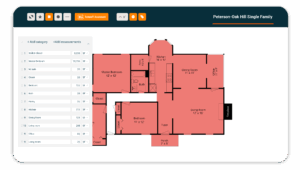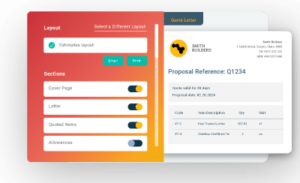Tendering in the construction industry is the process of requesting and receiving a price for a specific scope of work. The tendering process helps ensure true competition based on the same selection criteria. A tender process is used most often by public entities in their bid process but can be seen occasionally in the private sector as the process to identify a suitable contractor for a given project.
The process starts with an invitation to tender (ITT) a construction project [may also be called a request for proposal (RFP), invitation to bid (ITB), or request for qualifications (RFQ)]. The tender document includes all the information needed to provide pricing on the proposed scope of work. Based on the tender documents, contractors provide pricing to the owner. The owner or other parties involved reviews the tenders and selects the best one that fits their needs.
There are several types of tender processes that may be used to select a contractor: open, selective, negotiated, serial, framework, single-stage, and two-stage tendering.
Open tendering
During an open tendering process, anyone may submit a tender in response to the owner’s invitation. The opportunity is advertised where contractors can see it, and all interested contractors are invited to submit a bid. Some invitations, for example, those that involve large projects, may require that contractors are prequalified before submitting an open tender.
Open tendering is the most competitive tender option, allowing anyone who is interested in an opportunity to bid on it. It allows new and emerging contractors the opportunity to win work, and encourages competition.
Selective tendering
Selective tendering involves the owner choosing a short list of contractors to invite to the tender. In this case, only those invited may submit a tender offer. This type of tender works best with specialty or complex projects, where the owner wants to limit the response to only that particular class of construction companies they deem suitable for the work. An unknown contractor is not going to participate as they might in an open tendering procedure.
Selective tendering reduces what can be wasted effort from seeing proposals from too many contractors and helps ensure only the competent contractors participate. However, it excludes new and small companies who may be competent contractors, and reduces the overall number of competitive bids.
Negotiated tendering
In negotiated tendering only one dealer or contractor is selected to submit a tender, and the owner negotiates with that dealer or contractor to reach an agreement. This version is used for highly specialized contracts or the extension of an existing contract. This tendering process significantly reduces the cost, as there is only one proposal to review.
However, it discourages competition among contractors, which can lead to higher prices and a more challenging negotiation process.
Serial tendering
In a serial tendering opportunity, a particular contractor provides a set of typical values for a set scope of work over a series of similar projects.
The owner can select from the list of work to determine exactly what will be performed under the contract. Contractor prices may be lower with the expectation of ongoing work, less need for future tenders, and the establishment of a long term business relationship.
Framework tendering
Framework tendering involves the selection of a contractor for on-call work over a period of time. The contractor provides a schedule of rates and a breakdown of resources and overhead charges. This type of tender reduces costs and allows owners to get a quick response to repairs, since the contract is already signed and completed.
Single stage and two-stage tendering
In a single stage tender, the tender documents are fully designed before an invitation is sent out. One contract is awarded for the entire project.
In a two-stage tendering, the initial design hasn’t been completed yet. A contractor is selected to take part in two distinct stages.
They may propose their initial fee for design or may be chosen because of their qualifications. Once the design documents are complete, another tender is submitted for the construction of the project, and a contract is drawn up for that portion of the work.
The tender process
Most construction tendering in the engineering and construction industry goes through this process: invitation, clarification, submission, settlement, and contract execution.
Invitation to tender
The owner provides tender offers with information to potential dealers and contractors on the work to be performed. These tender request documents may include:
- Letter of invitation to tender
- Preliminary information (including pre-construction information and site waste management plan)
- Form of contract, contract conditions andamendments
- Employer’s information requirements if BIM is being used
- Tender pricing document (or contract sum analysis on design and build projects)
- Drawing schedule
- Design drawings, and perhaps an existing building information model
- Specifications
Clarification
Prospective tenderers submit questions and clarifications to the tender notice to help them understand the work. Responses are sent to all prospective bidders and changes may be made to the tender documentation. The bid deadline may be extended to give bidders time to review the information and get the necessary pricing.
Submission
Contractors submit competitive bids to the owner with pricing and information about how each contractor will complete the work. Documents submitted with the tender may include:
- Tender return slip, with details of the contract, including information such as return address and tender checklist
- Completed tender pricing document (or contract sum analysis on design and build projects)
- Schedules of rates
- An initial construction phase plan
- Design proposals or method statements that have been requested
- Procedures to be adopted, such as procurement procedures and cost management procedures
- Demonstration of capability, for example design capability, systems used, etc.
- BIM execution plan – if building information modeling is being used
- Key project personnel, which may require submission of CVs or resumes
- Management organization
- Plant and labor resources and availability
- Prior experience
- References
Variant bids
Contractors may submit alternatives or noncompliant proposals as an option for the owner. These options are usually less expensive than that proposed in the tender documents. Variant bids are usually provided only if requested and accompanied by a compliant proposal.
Qualified tenders
The contractor may submit a proposal with specific reservations or limited liabilities if they cannot or will not provide the services specified in the proposal documents.
Settlement
After reviewing the submitted tenders, the owner selects the preferred tenderer to enter into negotiations with by making a formal offer. Through this process, the tender documents and proposal may be revised to meet the conditions of the agreement.
Contract execution
The final contract is prepared, reviewed by both parties, and signed.
How to win more construction work through construction management software
In most tendering opportunities in the construction industry, dealers and contractors are competing based on experience and price. Anything contractors can do to reduce their project costs will make their bids more competitive. Construction management software keeps teams updated with the latest construction documents and information they need to keep the job moving, helping to prevent mistakes and costly rework.
Software can also significantly improve your response time because material takeoffs become simple and easy to perform. This also boosts the accuracy of your competitive tender. Instead of relying on legacy solutions, it’s time to modernize your estimating process so you can bid more projects and get more work. Buildxact helps contractors just like yours get more work every day.
Ready to see for yourself?
Give Buildxact a try with a 14-day free trial, or have one of our team take you through what Buildxact can do for your business with a one-on-one demo.


















